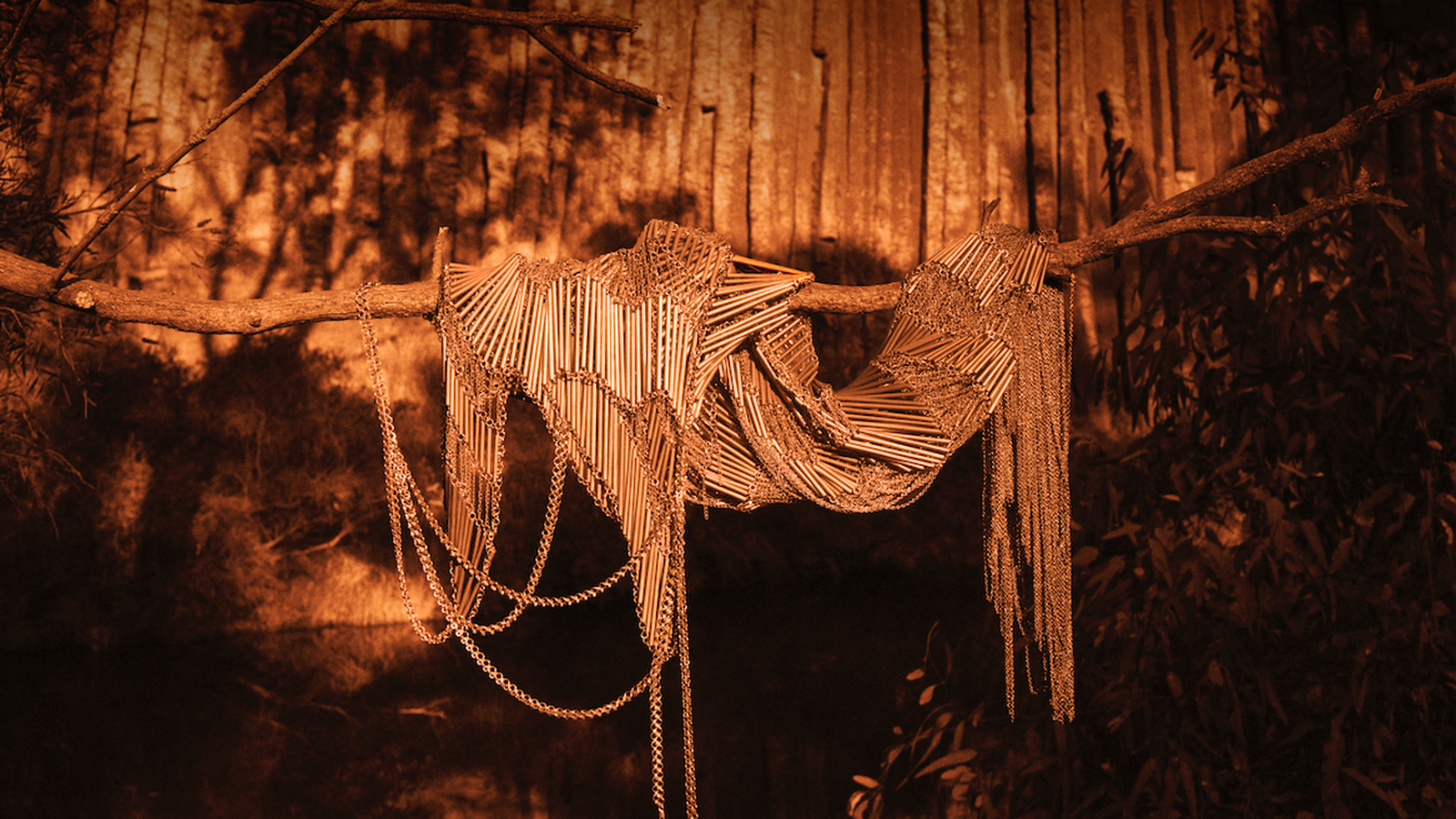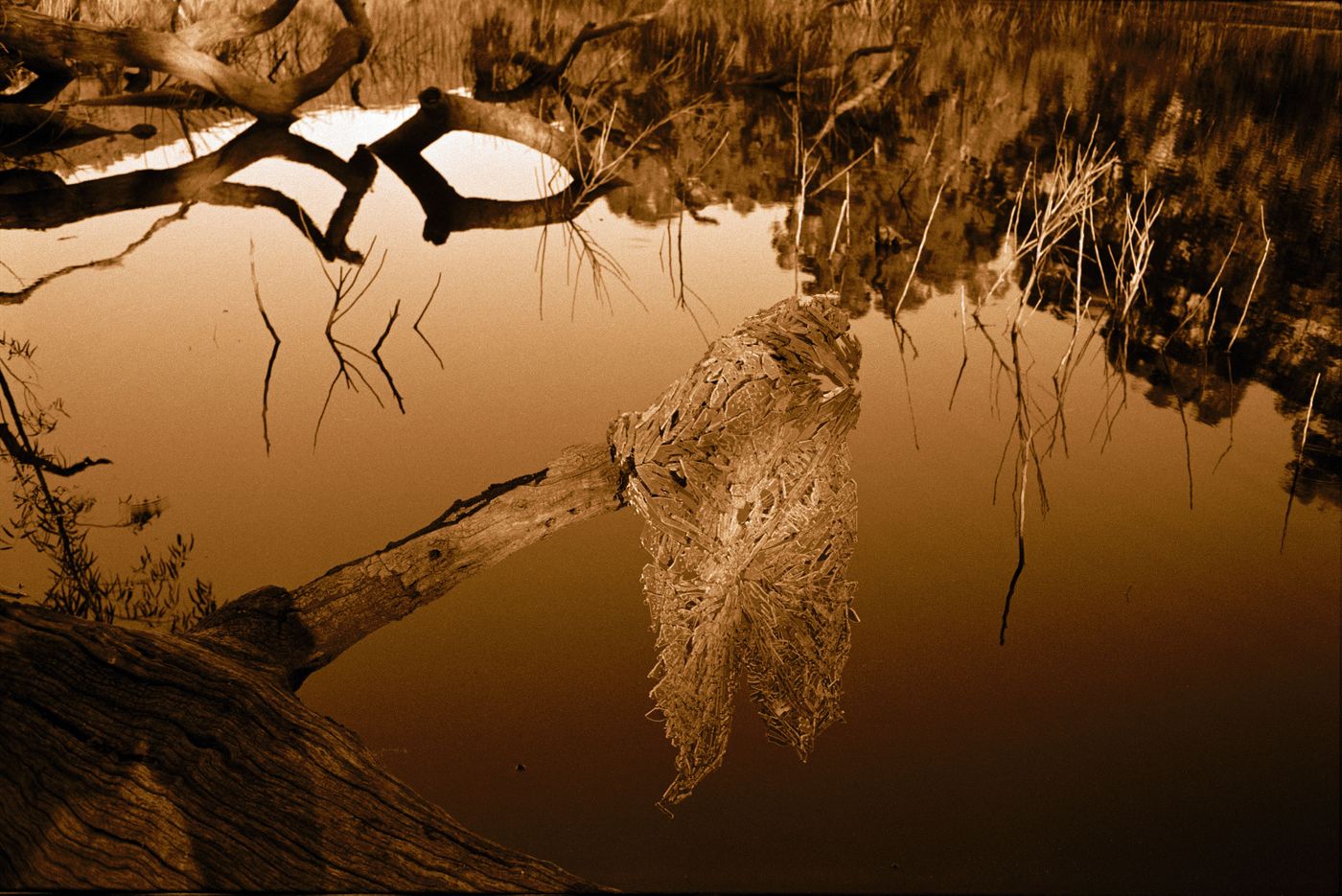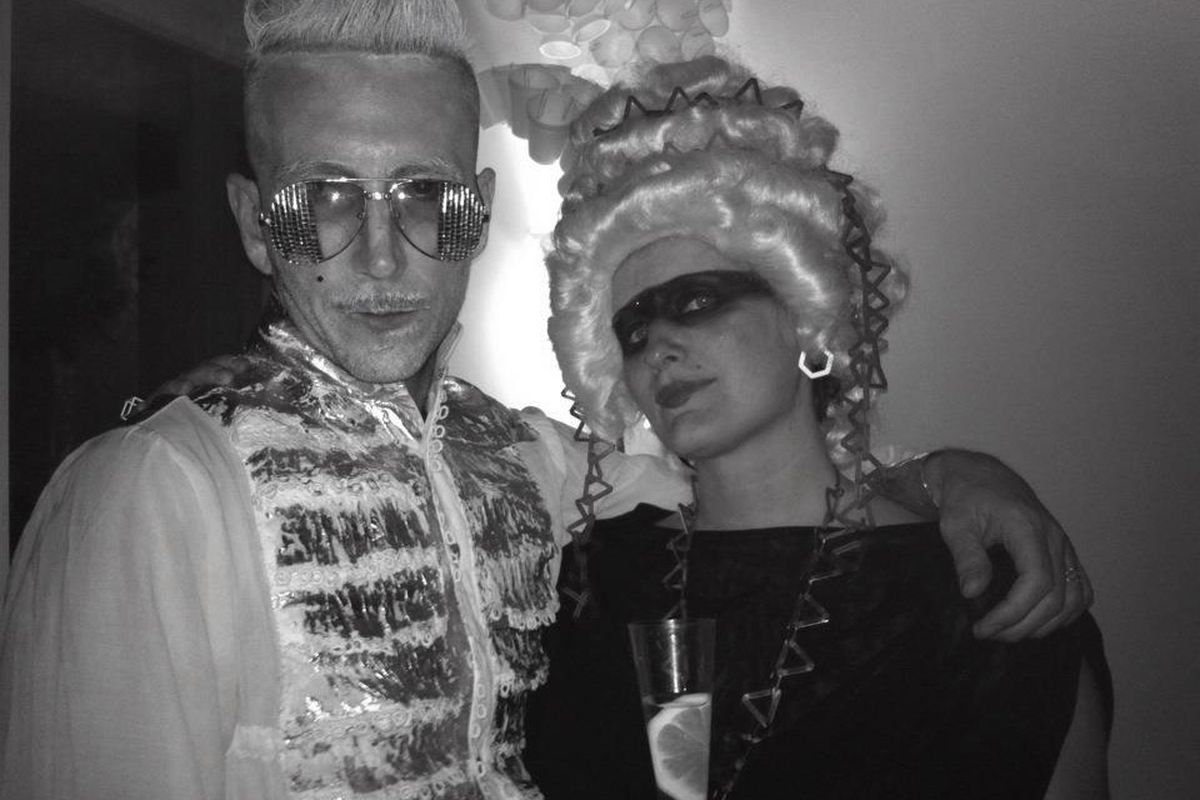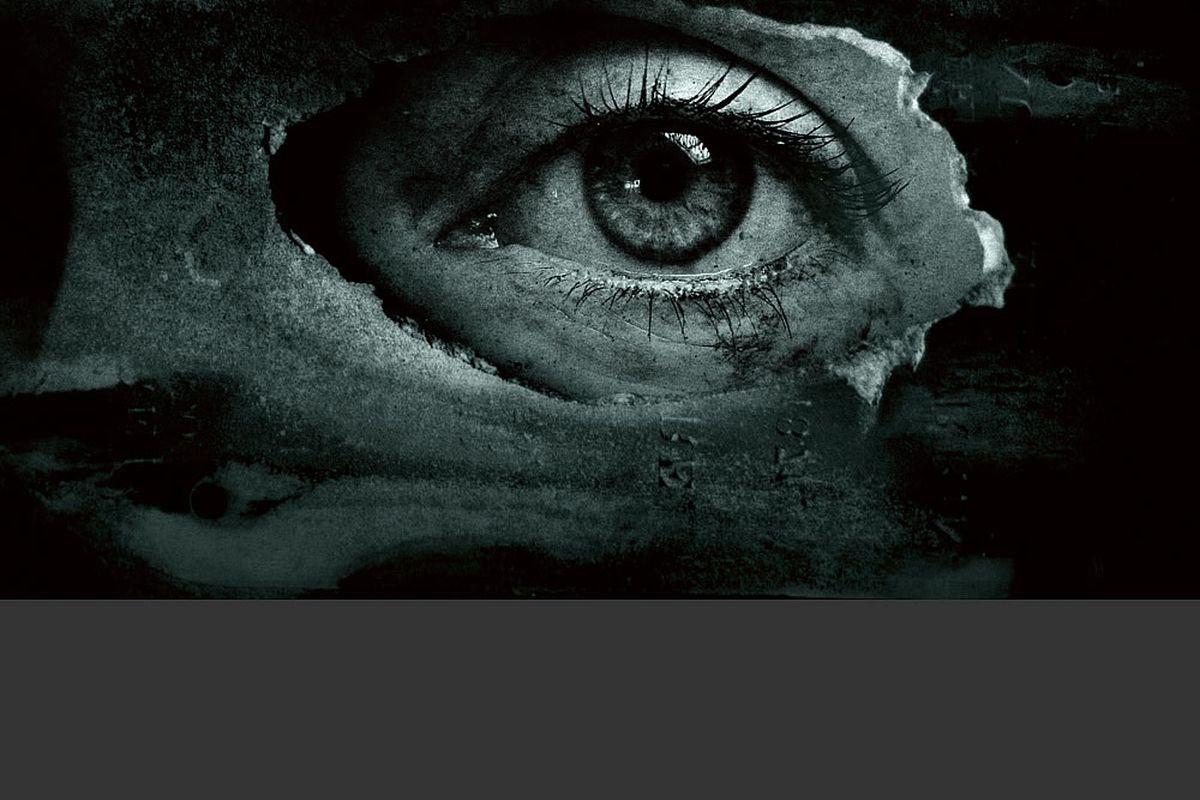Future Artefacts

8 February - 24 March 2018
Future Artefacts is the culmination of a seven-year collaboration between conceptual designers Alexi Freeman and Tessa Blazey, and an unveiling of new collaborations with photographer Jane Burton, sculptor Kate Rohde, and composer Byron Meyer.
The exhibition features sculptural gowns, veils and photographs featuring the works in ethereal settings. The techniques used include ancient low-tech jewellery processes, such as lost wax casting and chainmail construction, in combination with contemporary industrial manufacturing like laser cutting.
Freeman and Blazey's collaborative practice is inspired by their shared love of science fiction and geometry, crafting wearable sculptures that could potentially become artefacts of the future. The work explores a fascination with archaeology, evoking the imagined body through the design and production of wearable artefacts. They create a vision of what the future may look like and who the inhabitants might be - influenced by iconic fashion and costume pieces from the past including films like Barbarella 1968, The Man Who Fell to Earth 1976 and Blade Runner 1982. Freeman and Blazey propose through their works a time yet to come in the evolution of art, fashion design and contemporary jewellery.
Jane Burton is a photographic artist known for her depictions of female sensuality and sexuality, brooding landscapes, derelict architectures and abandoned interiors. Her pictures are drenched in a dark moodiness of the Gothic and bathed in a light that is cinematic and dreamlike, evoking charged atmospheres of desire and melancholy, mystery, and menace.
The collaboration is brought together by artist Kate Rohde’s resin sculptures as props and Byron Meyer’s ambient soundscape.
Future Artefacts is presented in collaboration with Karen Woodbury Fine Art and first presented at Craft Victoria.
Read a Q&A with Alexi Freeman, Tessa Blazey and Jane Burton in conversation with Karen Woodbury here.
Discover the Future Artefacts soundtrack by composer Byron Meyer here.
Explore the exhibition room sheet here and catalogue here
Event
Constructing Fantastical Worlds: An evening of fashion & photography
Fashion designer Alexi Freeman and photographer Jane Burton in conversation with ADC's Creative Strategy Associate Penny Craswell.
A behind the scenes look into the design process of Alexi Freeman and Future Artefacts collaborator Tessa Blazey. Photographer Jane Burton will present a slideshow of her work, with a particular focus on her influences in film, fantasy and fairy tales.
When: Friday 9 February 2018, 6-8pm
Where: Australian Design Centre, 101-115 William Street, Darlinghurst
Admission: Free.
RSVP essential - book here.
Filmed on location in Ballarat featuring Alexi Freeman and Tessa Blazey collaborative jewellery gowns.
Cinematographer & Editor - Philip Einwick, Stills Photographer - Paul.S.Philipson / Second Camera - Jaing Naizhong, Fashion - Alexi Freeman & Tessa Blazey, Shoes - Preston Zly for ALEXI FREEMAN, Model - Holly April Debut Management, Hair & Make Up - Nadja Mott, Fashion Assistant - Nadia Madzzar, Music - Sinking by Feverkin, Film by Einwick.
Future Artefacts from Australian Design Centre on Vimeo.
Image: Future Artefacts, collaborative work by Alexi Freeman and Tessa Blazey, photograph by Jane Burton.


Alexi Freeman & Tessa Blazey
As a collaborative duo Alexi Freeman and Tessa Blazey have created a series of sculptural works since 2010. During this time, these projects have evolved significantly as have their artisanal skills and grasp on contemporary modes of production.
The skill bases they have developed in their individual practices, have contributed substantially to their ongoing collaborative arts practice. This fusion of skills combining visual arts concepts with jewellery techniques, textile and garment methods have resulted in the development of a unique visual arts practice which they will continue to expand through the realisation of this project.
Since 2010, Freemand and Blazey have produced a number of highly labour intensive conceptual jewellery sculptures. Collaborative works have been exhibited at a range of public institutions including the Powerhouse Museum, Craft Victoria and the National Gallery of Victoria. The NGV also invited the duo to present an open studio of their work as part of the Community Hall project, a key aspect of the Melbourne Now public programming. They have been invited to speak about their collaborative practice on numerous occasions, including public presentations at Craft Victoria, Wangaratta Art Gallery, Mornington Peninsula Regional Gallery and Warrnambool Art Gallery. A previous collaborative work has toured extensively via NETS and they were recipients of Australia Council for the Arts funding in 2016 to develop the Future Artefacts project.

Jane Burton
Jane Burton is a photographic artist known for her depictions of female sensuality and sexuality, brooding landscapes, derelict architectures and abandoned interiors. Her pictures are drenched in a dark moodiness of the Gothic and bathed in a light that is cinematic and dreamlike, evoking charged atmospheres of desire and melancholy, mystery and menace. Predominantly, an isolated female figure – more often a nude - anchors a mis-en-scène redolent of crime-scene noir, Romantic Painting and the horror genre: atmospheres that allude to intricate fictions and morbid melodrama. Played out in interior spaces and within the landscape, Burton’s figures - whether women or children – often appear ethereal; like ghostly incarnations of memories, dreams, and fantasies. They exist at the liminal threshold of presence and absence, shifting between the material world of flesh and blood and that of the spirit, the psyche and the deep subconscious. Jane has an established fine arts practice and has exhibited extensively in Australia and internationally and her previous work is represented in major art collections including the National Gallery of Australia.
